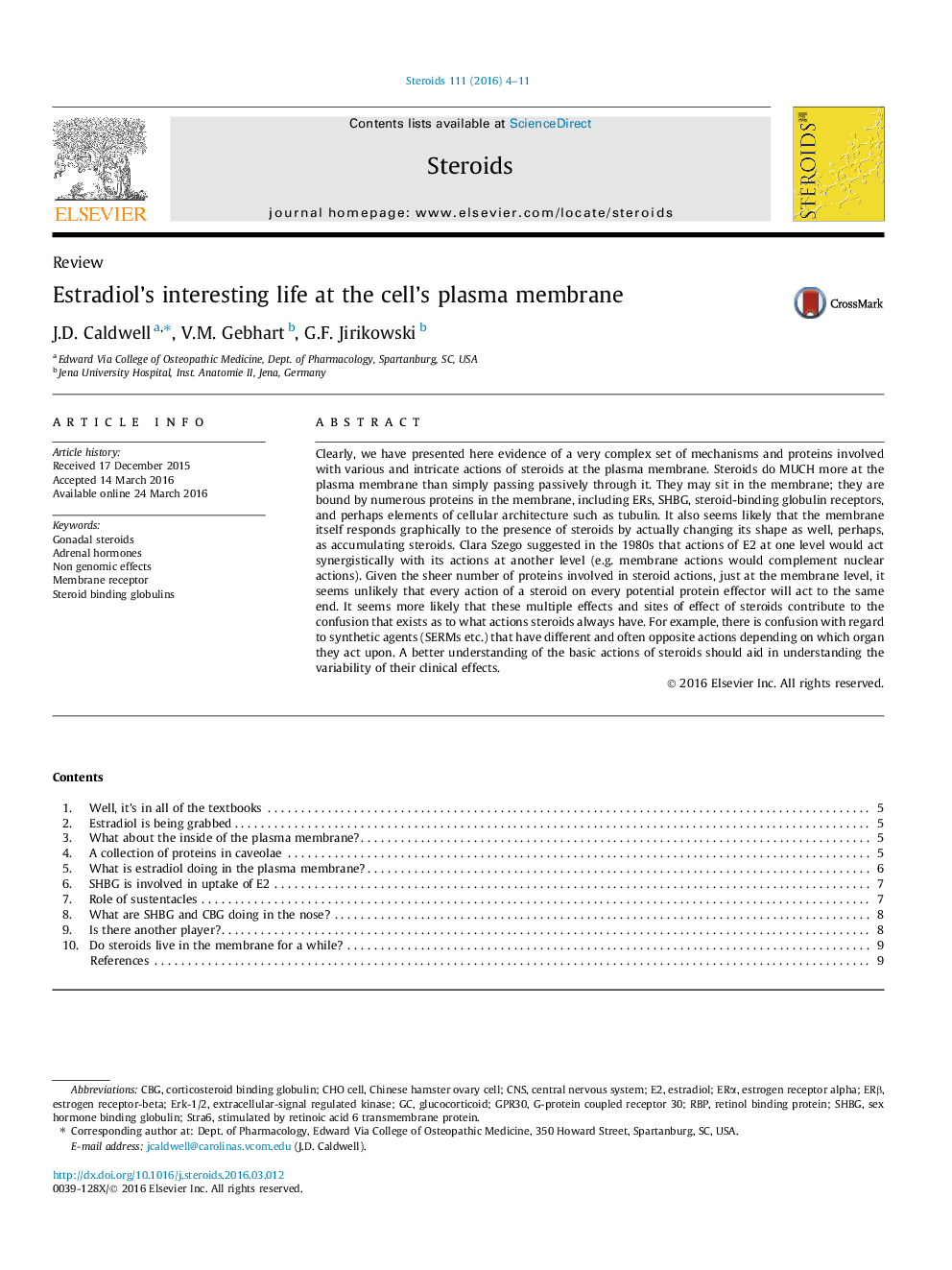| Article ID | Journal | Published Year | Pages | File Type |
|---|---|---|---|---|
| 8366734 | Steroids | 2016 | 8 Pages |
Abstract
Clearly, we have presented here evidence of a very complex set of mechanisms and proteins involved with various and intricate actions of steroids at the plasma membrane. Steroids do MUCH more at the plasma membrane than simply passing passively through it. They may sit in the membrane; they are bound by numerous proteins in the membrane, including ERs, SHBG, steroid-binding globulin receptors, and perhaps elements of cellular architecture such as tubulin. It also seems likely that the membrane itself responds graphically to the presence of steroids by actually changing its shape as well, perhaps, as accumulating steroids. Clara Szego suggested in the 1980s that actions of E2 at one level would act synergistically with its actions at another level (e.g. membrane actions would complement nuclear actions). Given the sheer number of proteins involved in steroid actions, just at the membrane level, it seems unlikely that every action of a steroid on every potential protein effector will act to the same end. It seems more likely that these multiple effects and sites of effect of steroids contribute to the confusion that exists as to what actions steroids always have. For example, there is confusion with regard to synthetic agents (SERMs etc.) that have different and often opposite actions depending on which organ they act upon. A better understanding of the basic actions of steroids should aid in understanding the variability of their clinical effects.
Keywords
GPR30STRA6ERK-1/2SHBGCBGRBPERβERαEstradiolGonadal steroidsCNSCHO cellChinese hamster ovary cellcentral nervous systemextracellular-signal regulated kinasesex hormone binding globulinAdrenal hormonesretinol binding proteinCorticosteroid binding globulinGlucocorticoidEstrogen receptor alphaestrogen receptor-betaMembrane receptor
Related Topics
Life Sciences
Biochemistry, Genetics and Molecular Biology
Biochemistry
Authors
J.D. Caldwell, V.M. Gebhart, G.F. Jirikowski,
